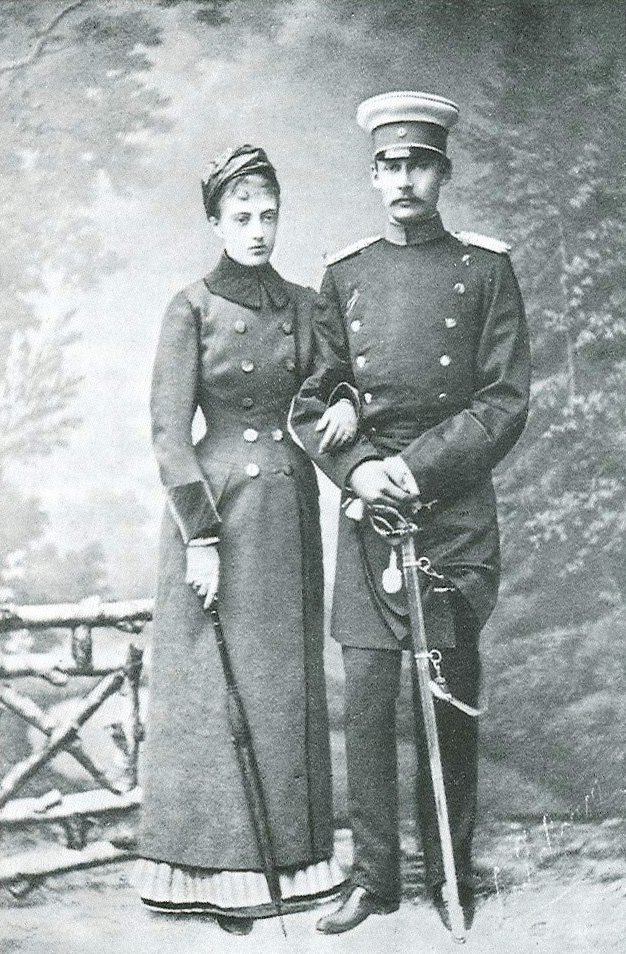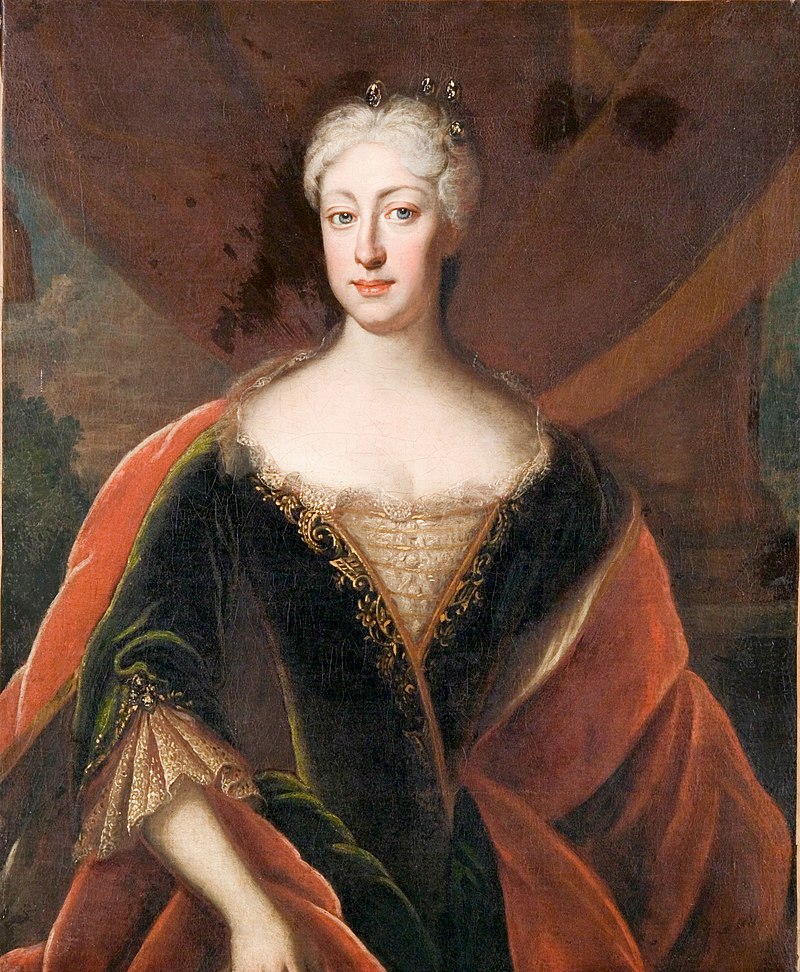by Susan Flantzer
© Unofficial Royalty 2023

Eleonora Gonzaga, Holy Roman Empress, `1651; Credit – Wikipedia
The Holy Roman Empire was a limited elective monarchy composed of hundreds of kingdoms, principalities, duchies, counties, prince-bishoprics, and Free Imperial Cities in central Europe. The Holy Roman Empire was not really holy since, after Holy Roman Emperor Charles V in 1530, no emperors were crowned by the pope or a bishop. It was not Roman but rather German because it was mainly in the regions of present-day Germany and Austria. It was an empire in name only – the territories it covered were mostly independent each with its own rulers. The Holy Roman Emperor directly ruled over only his family territories, and could not issue decrees and rule autonomously over the Holy Roman Empire. A Holy Roman Emperor was only as strong as his army and alliances, including marriage alliances, made him, and his power was severely restricted by the many sovereigns of the constituent monarchies of the Holy Roman Empire. From the 13th century, prince-electors, or electors for short, elected the Holy Roman Emperor from among the sovereigns of the constituent states.
Frequently but not always, it was common practice to elect the deceased Holy Roman Emperor’s heir. The Holy Roman Empire was an elective monarchy. No person had a legal right to the succession simply because he was related to the current Holy Roman Emperor. However, the Holy Roman Emperor could and often did, while still alive, have a relative (usually a son) elected to succeed him after his death. This elected heir apparent used the title King of the Romans.
********************
Eleonora Gonzaga of Mantua was the third of the three wives of Ferdinand III, Holy Roman Emperor. Born on November 18, 1630, in Mantua, Duchy of Mantua, now in Lombardy, Italy, Eleonora was the younger of the two children and the only daughter of Carlo II Gonzaga, Duke of Nevers and his first cousin Maria Gonzaga, Duchess of Montferrat in her own right. Her paternal grandparents were Carlo I, Duke of Mantua and Catherine de Lorraine-Guise. Eleonora’s maternal grandparents were Francesco IV Gonzaga, Duke of Mantua and Margherita of Savoy. Eleonora was the great-niece and namesake of Ferdinand III’s stepmother, also named Eleonora Gonzaga, the second wife of his father Holy Roman Emperor Ferdinand II.
Eleonora had one older brother:
Eleonora’s father Carlo never became Duke of Mantua since he died from tuberculosis on August 30, 1631, six years before the death of his father Carlo I, Duke of Mantua, when Eleonora was only nine months old. When Carlo I died in 1637, his grandson, Eleonora’s eight-year-old brother became Carlos II, Duke of Mantua, with his mother Maria acting as regent.
Eleonora received an excellent education. She was fluent in French, Spanish, and Italian, studied literature, music, and art, and had expert skills in dancing and embroidery. In her teens, Eleonora showed talent in poetry, writing philosophical and religious poems.
Archduchess Maria Leopoldine of Austria, the second wife and first cousin of Ferdinand III, Holy Roman Emperor, died in childbirth in 1649. Ferdinand III’s stepmother, the Dowager Holy Roman Empress, also named Eleonora Gonzaga, was the second wife of his father Ferdinand II and Eleonora’s great aunt. It was Dowager Holy Roman Empress Eleonora who arranged the marriage between her stepson Ferdinand III and grand niece and goddaughter Eleonora.

Eleonora’s husband Friedrich III, Holy Roman Emperor; Credit – Wikipedia
On March 2, 1651, at Palatina Basilica of St. Barbara, the family church of the House of Gonzaga in the Duchy of Mantua, now in Italy, twenty-year-old Eleonora and forty-two-year-old Ferdinand III, Holy Roman Emperor were married by proxy with Count Johann Maximilian von Lamberg, an Austrian nobleman, diplomat and courtier in the service of the Habsburgs, representing the groom. On March 22, 1651, Eleonora, accompanied by her great-aunt Dowager Holy Roman Empress Eleonora, began her journey from Mantua to Vienna. On April 30, 1651, the in-person wedding ceremony took place.
Eleonora became stepmother to Ferdinand III’s three surviving children from his first marriage to his first cousin Maria Anna of Spain who died in 1646:
- Ferdinand, King of the Romans (1633 – 1654), unmarried, died from smallpox
- Archduchess Mariana of Austria (1634 – 1696), married (second wife) her maternal uncle Felipe IV, King of Spain, had five children
- Leopold I, Holy Roman Emperor (1640 – 1705), married (1) his first cousin Margaret Theresa of Spain, had four children, only one survived childhood (2) Claudia Felicitas of Austria, had two children, both died in childhood (3) Eleonor Magdalene of Neuburg, had ten children, five survived childhood
Eleonora also became the stepmother of Ferdinand III’s only child from his second marriage to Maria Leopoldine of Austria who died in childbirth in 1649:
Eleonora and Ferdinand III had four children but only two survived childhood.
Although there was a twenty-two-year difference, Eleonora and Ferdinand III had a happy marriage and she developed a close relationship with her stepchildren. Eleonora learned German, and Ferdinand III learned Italian. The couple were patrons of literature and music, attended the theater, and went hunting. Eleonora and Ferdinand’s marriage lasted only six years. Ferdinand III, Holy Roman Emperor, Archduke of Lower and Inner Austria, King of Bohemia, King of Hungary and Croatia, died, aged forty-eight, on April 2, 1657, in Vienna, Archduchy of Austria. He was buried in the Imperial Crypt at the Capuchin Church in Vienna.
Archduke Leopold Wilhelm of Austria, Eleonora’s brother-in-law, considered marrying Eleonora to strengthen his position as a candidate to be Holy Roman Emperor. However, Eleonora did all she could to ensure that her seventeen-year-old surviving stepson would become Leopold I, Holy Roman Emperor. Eleonora was highly respected by Leopold who consulted with her on many political and personal issues.

Eleonora as a widow; Credit – Wikipedia
Ferdinand III’s will gave Eleonora the guardianship of his children. She was granted castles in Graz and Linz and a very generous annual pension. Eleonora spent summers at the Favorita Palace, which along with Schönbrunn and Laxenburg palaces, had been bequeathed to her by her great-aunt Dowager Empress Eleonora when she died in 1655. Eleonora was responsible for the expansion of Hofburg Palace, the main palace in Vienna, and the restoration of the palace when it was damaged in a fire.
Eleonora spent much time on works of charity and piety. She was a patron of the Italian Capuchin friar Marcus d’Aviano who was beatified in 2003 by Pope John Paul II. When Marcus d’Aviano died, he was interred at the Capuchin Church in Vienna, the burial place of the House of Habsburg. Even to this day, it is very common for members of the Habsburg family to be given Marcus d’Aviano as one of their middle names. Eleonora gave special patronage to the Order of the Discalced Carmelites and contributed financially to the building of their monastery in Wiener Neustadt. To raise the education level of girls, Eleonora invited the Ursuline nuns, known for their role in education, to Vienna and helped them build a complex that included a monastery, a church, and a school.

Eleonora’s tomb; Credit – Wikipedia
Eleonora survived her husband by twenty-nine years, dying on December 6, 1686, in Vienna, Archduchy of Austria, now the capital of Austria, at the age of fifty-six. She was buried in the Imperial Crypt at the Capuchin Church in Vienna.
This article is the intellectual property of Unofficial Royalty and is NOT TO BE COPIED, EDITED, OR POSTED IN ANY FORM ON ANOTHER WEBSITE under any circumstances. It is permissible to use a link that directs to Unofficial Royalty.
Works Cited
- Charles Gonzaga, Duke of Nevers (2019) Wikipedia. Available at: https://en.wikipedia.org/wiki/Charles_Gonzaga,_Duke_of_Nevers (Accessed: 08 July 2023).
- Eleonora Gonzaga (1630–1686) (2023) Wikipedia. Available at: https://en.wikipedia.org/wiki/Eleonora_Gonzaga_%281630%E2%80%931686%29 (Accessed: 08 July 2023).
- Flantzer, Susan. (2023) Ferdinand III, Holy Roman Emperor, Unofficial Royalty. Available at: https://www.unofficialroyalty.com/ferdinand-iii-holy-roman-emperor-archduke-of-lower-and-inner-austria-king-of-bohemia-king-of-hungary-and-croatia/ (Accessed: 08 July 2023).
- Wheatcroft, Andrew. (1995) The Habsburgs. London: Viking.
- Wilson, Peter H. (2016) Heart of Europe – A History of the Holy Roman Empire. Cambridge, MA: Harvard University Press.






























